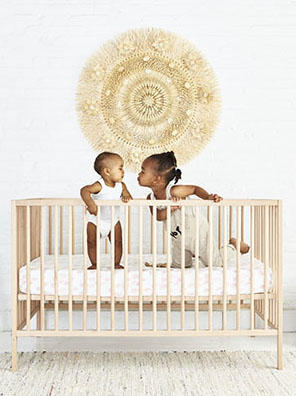The new kid’s room is as unique, bright, and imaginative as the child it’s made for—a fitting upgrade for modern families.
Good children’s design is more than simply scaling down “grown-up” furniture. There are size, material and functionality requirements to consider—food will be spilled, kids will trip, and bodies will grow—in addition to meeting mandated safety regulations. Not so long ago, furniture for kids was largely a nonissue: Children’s rooms were often found in the least desirable corners of the home, like a dormer or the attic. “The idea of playrooms, and of a child’s space being designed, are very new, 20th-century things,” says Megan Brandow-Faller, the editor of a collection of essays about the the role of toys and commercial culture on childhood that will be published in March. Upper-class families pioneered the notion of the modern child’s room in the 18th century, which was then widely adopted throughout the 19th and 20th centuries, she says. “Today, it is not uncommon for children to have the best room in the house.” That shift is reflected in a handful of innovative companies that are pushing children’s home goods to the forefront with customizable furniture, transformable pieces and decorative elements with staying power. The impetus for many was a desire to escape from the commercialized characters and ubiquitous gendering so prevalent in the marketplace. They’re all also firmly rooted in the belief that children’s home goods should be lasting, worthwhile investments and future family treasures.

For the Pattern-Loving Parent

BOH subscribers and BOH Insiders.









































